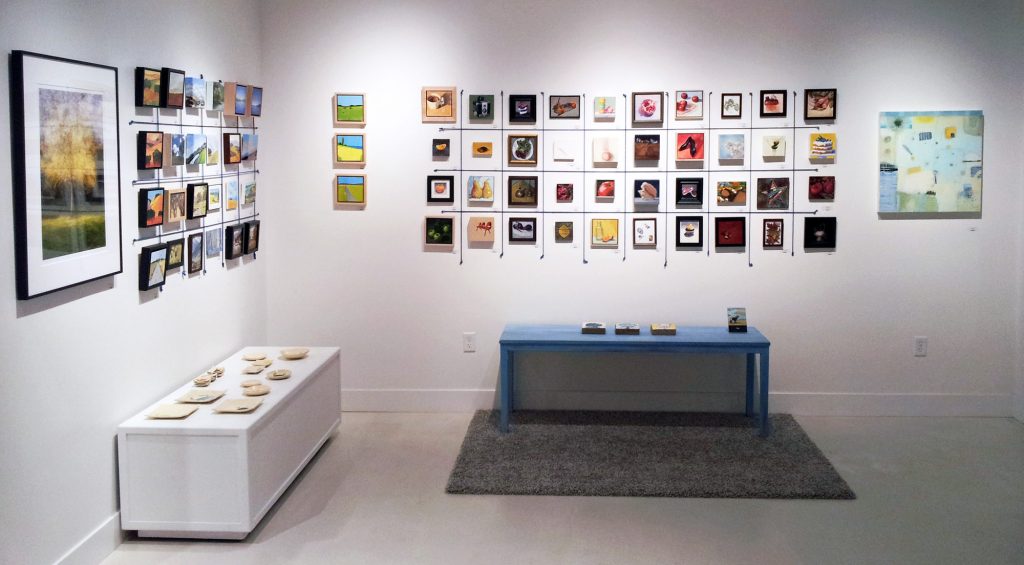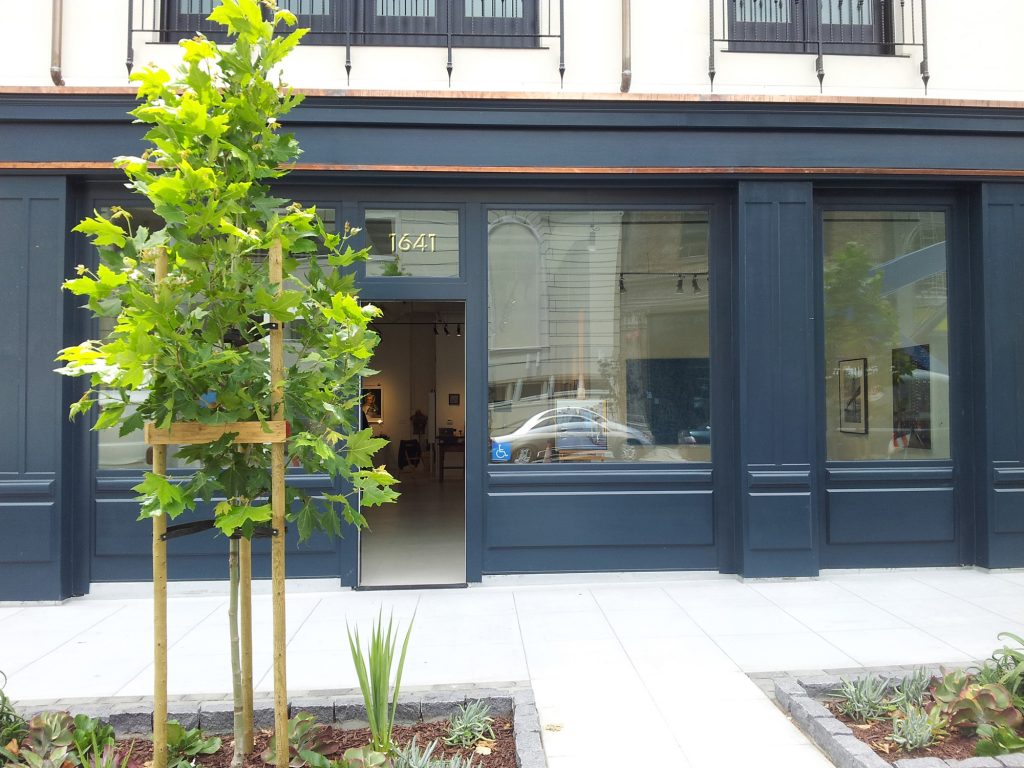ART | JEROME TARSHIS
It begins like many a story of San Francisco’s superheated real estate market: A small business, serving its neighborhood for years, is pushed out in favor of a clothing shop that could afford the higher rent.
Studio Gallery — sporting the slogan “local color by local artists” and originally housed on Polk Street — reflected the real lives of the couple who created it.
Rab Terry is an artist with a studio at Hunter’s Point Naval Shipyard. Not having been taken up by the gallery system, he found alternative ways to sell his work, exhibiting at craft shows and inviting people to his studio. His wife, Jennifer Farris, began as an English major who eventually found herself working as a consultant at Deloitte with major corporate clients. That kind of experience can make people very ready to do something different; since the couple collected art, they decided to open a gallery together.
Part of their original space at 1718A Polk Street was devoted to a small-scale artist’s studio, where Terry could meet with potential clients. The atelier-like setting offered the charm of visiting an artist without the trip to Hunter’s Point. In the rest of the space, they showed other artists’ work. The name Studio Gallery brought together both aspects of the business.
“We didn’t have to worry about where we would find art to exhibit,” Farris explains. “We had so many artist friends. And they weren’t afraid that if they consigned work to us they might not get paid. They knew us and we’d paid them for their art.”
As time passed, the atelier faded away and Terry’s paintings on Venetian plaster took their place among the gallery’s general inventory. The gallery, a going concern, popular in the neighborhood, moved to a space a block down Polk twice as large as the original location. It had a workable business plan: mostly representational art, landscapes and cityscapes, some glass and ceramics and some borderline media, such as humorous clock faces and old books artistically modified.
Around the middle of 2013, they began making noises about looking for a new space. “Got to be out by the end of the year,” they said. “Hope to stay in the neighborhood.” So it was disquieting that the gallery closed before finding a new location. Its website noted the gallery was “on hiatus,” which sounded vaguely like going out of business, or going Internet-only.
But last July, the gallery reopened at 1641 Pacific, between Polk and Van Ness. The space was larger and more handsome than the previous location. It is the first retail tenant of a new 39-unit apartment building designed with a strong emphasis on visual pleasure.
The postmodern architecture makes a serious effort to reflect pre-World War II style. And the public spaces of the building include works by local artist Zio Ziegler, a painter, illustrator and clothing designer located in Mill Valley, whose mural projects are located around the world. For the building on Pacific, he executed a sizeable mural on the inside wall of the building’s back yard.
For the first half of January, the gallery will be on post-holiday break. It reopens with works from its holiday group show, “Tiny,” with a theme of artworks no larger than 7-by-7 inches, priced no higher than $500. Yielding to caprice, Farris and Terry have added, under the title “Huge,” larger pieces they just couldn’t hold themselves back from exhibiting. The show is an expanding annual event: This year’s version runs to more than 300 pieces, mostly on the walls but some exhibited face-up on tables and cabinets.
“Tiny” is the epitome of the gallery’s style: relatively small works at relatively modest prices. That leaves out the kind of art made to be seen in a museum or a showplace home, but it clearly serves artists and purchasers who are not so different from the business owners.
“We’re having a ball doing this,” says Farris. “The art is the kind of art we collect — and the artists have become our friends.”
Filed under: Art & Design







